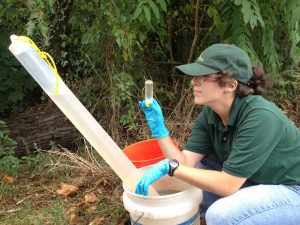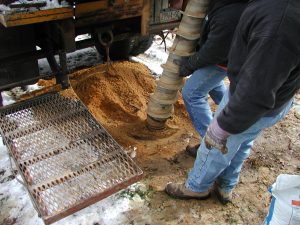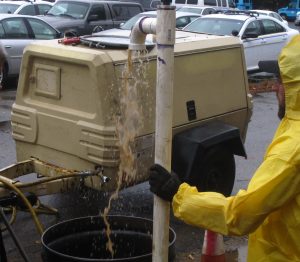Groundwater Monitoring Well Installation Basics
Groundwater monitoring wells are commonly installed at sites that are known to be or suspected to be contaminated by a variety of substances such as petroleum compounds or chlorinated solvents.
Groundwater Quality Sampling
Monitoring wells allow for the analysis of chemical, biological and/or physical properties of groundwater within an aquifer, as well as an evaluation of groundwater flow direction. Wells are often sampled at regular intervals (e.g. monthly, quarterly, annually), as directed by local, state or federal regulatory agencies, to understand trends over time and to make decisions about necessary remedial actions.
Monitoring Well Design
Monitoring wells may vary in diameter depending upon their intended application, and are typically comprised of polyvinyl chloride (PVC) or stainless steel. The materials used in constructing monitoring wells and the type of equipment used to install them are determined by site-specific factors such as local geologic conditions and project objectives.
How are Monitoring Wells Installed?
Monitoring wells are installed into the underlying aquifer by various types of drilling methods, including:
- Hollow Stem Auger
- Solid Stem Auger
- Direct Push
- Air Rotary
- Mud Rotary
- Water Rotary
- Sonic
Installation Isn’t Over When the Well Is in the Ground
Once a monitoring well is installed, it must be properly developed in order to enhance the natural hydraulic flow into the well from the geological formation beneath the Site, remove organic or inorganic materials that may be in the well as a result of construction, minimize the amount of sediment in the water samples collected from the well, and ensure that any samples collected are truly representative of the quality of groundwater moving through the aquifer.
How are Monitoring Wells Developed
Monitoring well development entails removing copious quantities of water from the well while assessing certain water quality parameters, and generally takes place a minimum of 24 hours after installation is completed in order to ensure that the well materials are set in place. Methods for monitoring well development may include bailing, pumping, surging, backwashing, jetting, and/or airlift pumping and surging with compressed air.
Monitoring Well Development and Sample Quality
According to the U.S. Environmental Protection Agency (EPA), well development activities must continue until the water within the well is free of sediment, and the pH, temperature, turbidity and specific conductivity stabilize. If a high amount of sediment remains in the water, development may be required to extend over the course of several days. Once the well is developed and the groundwater parameters have stabilize over an appropriate amount of time, sampling can begin.
Monitoring Well Issues
If a monitoring well is not installed or developed properly, it may yield groundwater samples that are not only of poor quality, but do not truly represent groundwater conditions beneath a Site. Therefore, data collected from an improperly installed or developed well may lead to incorrect conclusions about the environmental quality of the Site and, ultimately, the implementation of improper remedial actions which may pose financial and/or health and safety risks to property owners, operators and the general public.
 Environmental Services
Environmental Services
If you are searching for a firm to assist you with the design, installation and development of monitoring wells, or establishing a groundwater monitoring program, contact Walden Environmental Engineering at 516-624-7200 and check our services page to see other ways Walden serves its clients.




